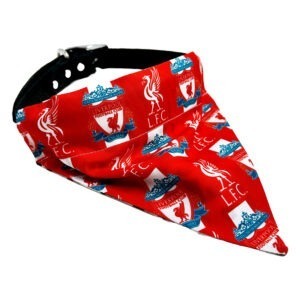The Saint Bernard breed is renowned for its impressive size, gentle nature, and heroic rescue efforts. This blog article delves into the fascinating origin and history of the Saint Bernard breed, explores its physical attributes and temperament, highlights its presence in popular culture, discusses health and care requirements, provides insights into training and socialization, explores the breed’s current role in rescue operations, and concludes with an overview of the breed’s present status and enduring appeal.
The Origin and History of the Saint Bernard Breed
The Saint Bernard breed traces its roots back to the Swiss Alps, specifically the hospice of Saint Bernard de Menthon, from which it derives its name. These magnificent dogs were initially bred by the hospice monks for use in their mountain rescue operations. Over time, the breed’s characteristics and capabilities were refined, resulting in the noble and dependable Sint Bernard we know today.
The Saint Bernard’s contribution to rescue operations in the treacherous Alps is legendary. These dogs were instrumental in locating and saving lost or stranded travelers amidst harsh weather conditions and perilous terrains. Their acute sense of smell, strong build, and unwavering determination made them invaluable companions in life-saving missions.
Some of our latest products...
-
Bandana's voor honden
Liverpool FC Dog Bandana
$ 13.19 – $ 16.12 Amerikaanse Dollar Opties selecteren Dit product heeft meerdere variaties. Deze optie kan gekozen worden op de productpagina -
Bandana's voor honden
Manchester City Dog Bandana
$ 13.19 – $ 16.12 Amerikaanse Dollar Opties selecteren Dit product heeft meerdere variaties. Deze optie kan gekozen worden op de productpagina -
Bandana's voor honden
Manchester United Dog Bandana
$ 13.19 – $ 16.12 Amerikaanse Dollar Opties selecteren Dit product heeft meerdere variaties. Deze optie kan gekozen worden op de productpagina -
Halsbanden voor honden
Pittsburgh Steelers Halsband
$ 20.52 Amerikaanse Dollar Opties selecteren Dit product heeft meerdere variaties. Deze optie kan gekozen worden op de productpagina
As the fame of the Saint Bernard’s rescue efforts spread, the breed caught the attention of travelers and explorers who visited the hospice. These visitors recognized the dog’s remarkable abilities and began to take them back to their home countries. The breed’s journey from the Alps to the rest of the world commenced, leading to its widespread popularity and recognition.
Physical Attributes and Temperament
The Saint Bernard is an impressive and imposing breed. It stands tall with a powerful and muscular build. Their broad heads feature expressive eyes and a gentle expression. The breed is known for its wrinkled forehead, which adds to its distinct appearance. Saint Bernards have a thick double coat, often seen in a combination of white with patches of tan, red, or mahogany.
Despite their large size, Saint Bernards are renowned for their gentle and friendly temperament. They are known for their patience, tolerance, and affectionate nature, especially towards children. These dogs thrive on human companionship and form strong bonds with their families. Their calm and patient demeanor makes them excellent therapy dogs.
Saint Bernard in Popular Culture
The Saint Bernard breed has left an indelible mark on popular culture. It has made numerous appearances in movies, TV shows, and literature, captivating audiences with its endearing personality and iconic appearance. One of the most iconic portrayals of a Saint Bernard is in the classic film “Beethoven,” where the breed’s loyalty and protective instincts are showcased.
Additionally, the breed has been featured in literary works, such as “Peter Pan” and “Harry Potter,” further solidifying its status in popular culture. Real-life Saint Bernards have also gained fame throughout history. Barry, a Saint Bernard who saved over 40 lives in the Alps, is revered as a hero and symbol of the breed’s bravery.
Health and Care Requirements
While Saint Bernards are generally healthy dogs, they are prone to certain health issues that potential owners should be aware of. One of the primary concerns is hip and elbow dysplasia, a condition where the joints do not develop properly. Regular exercise, a balanced diet, and weight management can help reduce the risk of these issues.
Due to their large size, Saint Bernards may also be susceptible to bloat, a potentially life-threatening condition. Feeding them multiple small meals throughout the day, rather than one large meal, can help prevent this. Regular grooming, including brushing their thick coats and cleaning their facial folds, is essential to maintain their hygiene and prevent skin infections.
Training and Socialization
Early socialization and training are crucial for Saint Bernards to become well-rounded and obedient companions. Positive reinforcement techniques work best with this breed, as they respond well to praise and rewards. Basic commands, leash training, and exposure to various environments should be incorporated into their training regimen from an early age.
Considering their size and strength, leash manners are particularly important for Saint Bernards. Proper leash training ensures they can be safely controlled during walks. Early socialization is necessary to expose them to different people, animals, and situations, ensuring they grow up to be confident and friendly dogs.
The Saint Bernard in Modern-Day Rescue Operations
While the breed’s role in rescue operations in the Swiss Alps has diminished over the years, Saint Bernards continue to contribute to rescue missions in various parts of the world. Their innate sense of direction, agility, and search-and-rescue abilities make them valuable assets in locating and assisting people in distress.
Numerous heartwarming stories exist of Saint Bernards saving lives in modern-day rescue operations. From finding lost hikers in remote areas to assisting in disaster-stricken regions, these dogs continue to exhibit their unwavering dedication and life-saving skills. Their presence provides comfort and hope to those in need during challenging times.
The Saint Bernard Today
Today, the Saint Bernard breed enjoys popularity worldwide, both as a family companion and a symbol of bravery. Despite their size, Saint Bernards are gentle and patient with children, making them excellent family pets. Their calm and affectionate nature, coupled with their loyalty, endears them to countless families around the globe.
However, it is important for potential owners to consider their living arrangements and ability to meet the breed’s exercise and care requirements. Saint Bernards thrive in homes with ample space, where they can move comfortably. Regular exercise, a balanced diet, and proper grooming are vital to their overall well-being.
The future of the Saint Bernard breed looks promising, with responsible breeding practices aimed at preserving the breed’s health and temperament. As long as their remarkable history and qualities are cherished and respected, the Saint Bernard will continue to captivate hearts and remain a cherished breed worldwide.
Conclusie
The Saint Bernard breed’s origin, history, physical attributes, temperament, and contributions to rescue operations have solidified its place in the hearts of dog enthusiasts worldwide. Their gentle nature, coupled with their heroic past, makes them an exceptional breed with an enduring appeal. Whether as a family companion, therapy dog, or working partner, the Saint Bernard continues to bring joy, comfort, and a touch of heroism to the lives of many.
Veelgestelde vragen
1. Are Saint Bernards suitable for families with children?
Yes, Saint Bernards are known for their patience and gentle nature, making them excellent companions for families with children. However, it’s important to supervise interactions between dogs and young children to ensure mutual respect and safety.
2. Do Saint Bernards require a lot of exercise?
While Saint Bernards are not as high-energy as some other breeds, they still require regular exercise to maintain their health and well-being. Daily walks and playtime in a secure area are recommended to meet their exercise needs.
3. Are Saint Bernards prone to health issues?
Like many large breeds, Saint Bernards can be prone to certain health issues, including hip and elbow dysplasia and bloat. Regular veterinary check-ups, a balanced diet, exercise, and proper grooming can help mitigate these risks.
4. Can Saint Bernards be trained easily?
Yes, Saint Bernards are intelligent and eager to please, which makes them trainable. However, consistent and positive reinforcement methods should be employed, and early socialization is crucial to ensure they grow up to be well-behaved dogs.
5. Are Saint Bernards still used in rescue operations today?
While the breed’s role in rescue operations has diminished in the Swiss Alps, Saint Bernards continue to contribute to rescue missions in various parts of the world. Their search-and-rescue abilities and gentle nature make them valuable assets in saving lives.





